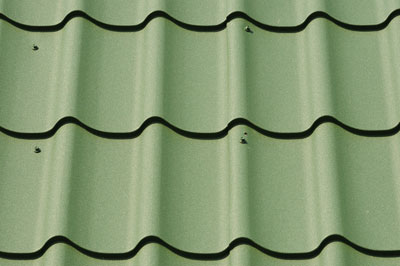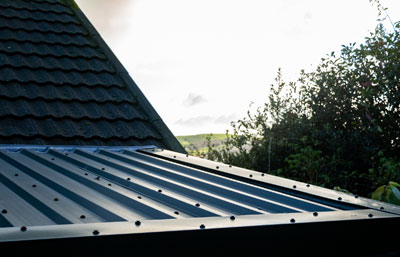Asphalt shingles may be the most popular roofing option in the United States, but in Idaho, metal roofing options are an increasingly popular choice. Here’s what you should know about Idaho metal roofing options.
The Benefits of Metal Roofing

Metal roofs are also 100% recyclable. It’s easy to deposit them at a company that can reforge them into fresh, new roofs, which is far better than shingles that will eventually disintegrate and further pollute the environment.
Homes in Idaho also have to deal with a broad swing in temperatures. Metal roofs are energy-efficient, reflecting heat well in both summer and winter to help buildings maintain a steady temperature. They are much more efficient than asphalt because they don’t absorb heat.
For anyone worried about fire, metal roofs are typically quite fire-resistant. Apart from being nonflammable, most metal roofs can endure temperatures of over 2000 degrees before they start melting, and that’s higher than house fires typically get.
Roof Protection From The Elements
Contents
Metal Roofing For Winter Snow
Snow and ice can cause damage to asphalt shingles, but a metal roof will help shed snow and ice more easily. Aside from having a smooth surface, metal’s ability to reflect light helps bounce it to the underside of the ice, which melts snow and ice sooner, causing it to slide off the roof instead of lingering and causing damage.
Protection From High Winds
Metal does quite well in high winds if it’s anchored correctly. Its natural weight makes it much harder for the wind to jostle or damage it, and Idaho doesn’t have tornadoes or other extreme wind events that might cause a problem. Most metal roofs can withstand winds of up to 140 miles per hour. For context, even major windstorms (like one in 2012) rarely exceed 70.
Metal also protects against debris from windstorms, which bounce off the hard surface.
Heat and Sun Protection

High-quality metal roofing ultimately lowers the temperature of a home in summer. Depending on the type of building, a metal roof can save as much as 50% on cooling costs during the warmer parts of the year.
Durability To Reduce Hail Damage
Metal roofs are durable in extreme weather conditions, including hailstorms, wind, and particularly heavy snowfall. They hold weight much better than singles, and a proper metal roof is hard enough to take no damage in even the heaviest hailstorms.
Metal Roofing Material Costs and Installation
Homeowners looking for metal roofs have several main options, some of which are available in different colors and materials.

Copper is a premium choice. It’s extraordinarily durable and impressively light, with minimal maintenance and a lifespan that could exceed a hundred years. However, copper is expensive, costing up to $40 per square foot.
Corrugated Metal is a popular choice because it’s affordable, ending at around $12 per square foot. It’s easy to install and can go over many existing roofs, but it’s not quite as durable as some other metals.
Steel comes in several varieties. Galvanized steel works well in Idaho and has a zinc coating that stops most corrosion, which is available at about $10 per square foot, and since it’s more durable than corrugated metal, it’s a better choice for most buyers. Stainless steel costs up to $16 per square foot but needs more maintenance to uphold its appearance.
Most steel roofing panels are 24 or 26 gauge (a measure of their thickness). Lower is thicker with this measurement. Some companies also offer 22 gauge (most durable, but also heavier) and 29 gauge (thinner and weaker, but cheaper) options.

Zinc is a well-balanced choice for many buyers. It lasts up to 150 years with proper sealing and requires practically no maintenance. It’s tougher than aluminum and more affordable than copper at about $18 per square foot. It’s competitive with tin and aluminum in pricing, and in most cases, zinc is the best option among the three.
Many of these options are available in standing seam panels, which are a different way of installing them. Standing seams have a special design that protects the fastening parts, so they aren’t subject to weathering. They also expand and contract well, which prevents damage from changing temperatures.
Understanding Metal Roofing Costs
The most important thing to understand about metal roofing’s price is that it costs more than asphalt shingles up-front but usually offers better savings over time. Between its significantly better energy efficiency (especially in warm months) and its long lifespan, metal roofs can ultimately save you money.
Conclusion
E & H Roofing company provides roofing installation, restoration, and roof inspection services to Ada County. Idaho metal roofing is an excellent option for any homeowner who wants to get a durable and practical material. Metal is good in all areas of the state throughout the year, with snow sliding off quickly and the bright panels reflecting heat during summer.

